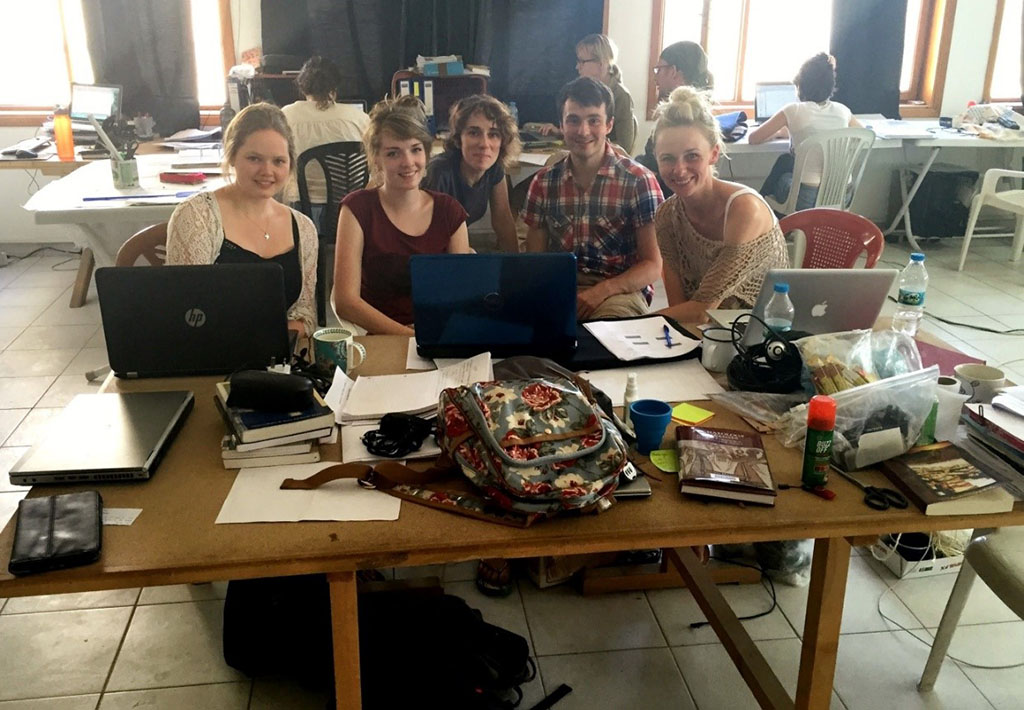Article by Jenna Tinning

The primary goal of the Visualisation Team during the 2015 field season at Çatalhöyük was to collect all of the content necessary to redo the entire web presence of the site – including all of the site’s social media. There were a number of important implications we had to consider when attempting a project like this. In a medium such as the internet where the visual aspects are so highly prioritised, the impression that the website gives is crucial. Every piece of content we wrote, and every image we selected, had to go through numerous rounds of critique. This was to ensure that the content was truly reflective of different stakeholders’ interests, as well as critically engaged with the values of the project.
This process was arguably made harder by the fact that last year we had no internet access at the site, apart from one computer connection which was shared by over 100 people. I personally saw this as a blessing and a curse. While Google is a wonderful tool for making information available at our fingertips, the nature of this, and the unlimited possibilities it presents while carrying out such research are problematic. You’ll know what I mean if you’ve ever set out to look for one piece of information, only to spend hours travelling through link after link until you end up at a random clip on YouTube, with the reason you started out in the first place a distant memory. These are the “difficulties inherent in utilizing a medium which can just as easily distract as it can instruct” (Emmison et al 2012, 218).
Instead we had to utilize the sources that were at our disposal including available archives and existing materials, such as panels in the visitor centre, guidebooks, publications of the site, as well as decades of visitor research and conversations with the many world-leading scholars working at the site. We allocated each other different web headings and were put in charge of finding content for each, with a limited word count of up to 300 words per page. This was challenging as text has to be extremely concise while still retaining the most important information. It was a vital endeavour though, as the previous Çatalhöyük webpage was outdated and very specialist-oriented, with limited accessibility for general audiences. One of the most positive reasons for an archaeological site to have a webpage, and social media accounts for that matter, is that they can enable constant connectivity with both public and professional audiences. Webpages allow for new interpretations to be circulated rapidly, and for images and text to be changed in response to those circulations.
With this in mind one of our priorities during our time at Ҫatalhöyük has been to take charge of the site’s Facebook and Twitter accounts, to see how we could employ more of a conversational tone, which would open up a dialogue with non-specialist audiences using these mediums. We drafted enough posts for at least one a day for a little over a week, and used a mixture of styles, featuring a variety of people that work at the site. Some of the posts included direct quotes, while others explained what different specialists were doing at that moment in time, or how they were drawn to Çatalhöyük, but summarised in a way that we hoped would have a resonating message across all audiences. Interestingly all of these posts received positive feedback in some form, with one Facebook user commenting “I am looking forward to learning more about this site.” This is something which was continued into the 2016 field season and hopefully this engaging style of posting will continue in the future, leading to further online participation!
Emmison, M., Smith, P., Smith, P. D., & Mayall, M. (2012). Researching the visual. Los Angeles: Sage.





